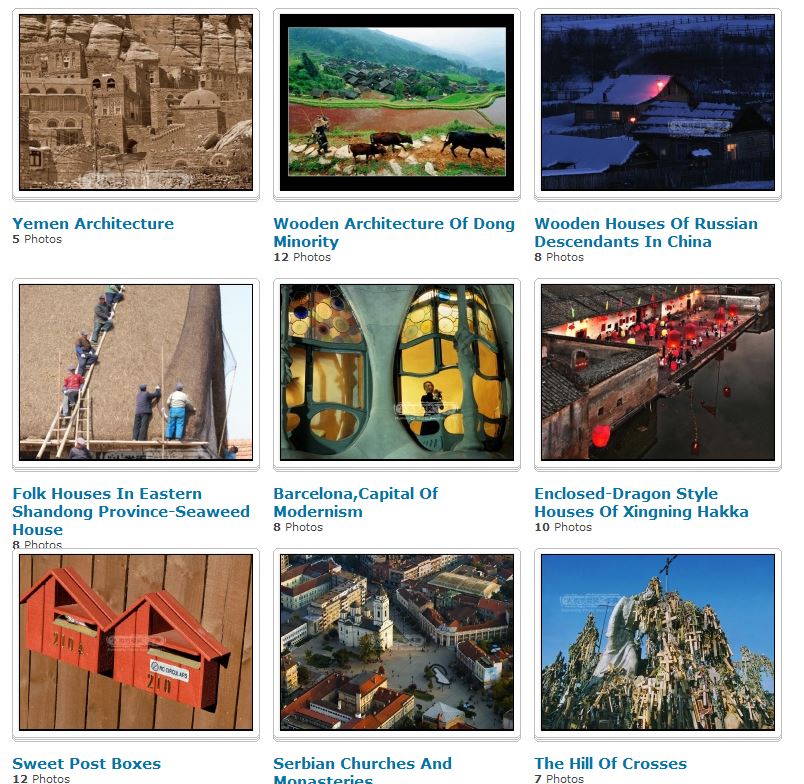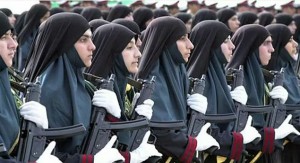Sculptor Anthony Caro
Sir Anthony Caro, one of Britain’s top sculptors and a pioneer of modernist art died of a heart attack on Thursday (October 24th 2013).
Caro is widely regarded as the greatest British sculptor of his generation and played a major role in the development of 20th Century sculpture.
He worked as an assistant to Henry Moore in the 1950s and first came to public attention with a show at the Whitechapel Gallery in 1963 in which he exhibited large abstract sculptures which stood directly on the ground (rather than on the tradition sculptural plinths) and were brightly painted, encouraging direct interaction with the viewer.
Above: Artist Sir Anthony Caro in conversation with Julius Bryant,
Keeper of Word & Image, Victoria and Albert Museum, London.
From the BBC in Pictures: Anthony Caro
more information on their website
Picture 1 : Sculptor Sir Antony Caro, who has died at the age of 89, first came to public attention with his large abstract sculptures in the 1960s. Widely regarded as one of Britain’s greatest sculptors, his work has continued to be displayed and enjoyed around the world.
Picture 2 : The sculptor’s Month Of May (1963) – made from steel and aluminium – was on display as part of The New Situation: Art in London in the Sixties exhibition at Sotheby’s auction rooms in September.
Picture 3 : An exhibition of monumental sculptures by Sir Anthony opened at Chatsworth House in Derbyshire in 2012. The show featured steel works arranged around the Canal Pond, facing the Duke of Devonshire’s historic home.
Picture 4 : A room was given over to Sir Anthony’s steel structure Shadows when it featured in the Royal Academy’s Summer Exhibition in June.
Picture 5 : His sculpture Millbank Steps 2004 has been displayed at Tate Britain. Made from 100 tonnes of steel, it is 5 metres tall and 25 metres across.
Picture 6 : The design team behind London’s Millennium Bridge comprised of Tony Fitzpatrick, Lord Foster and sculptor Sir Anthony. The bridge wobbled when it opened in June 2000 because of what engineers called “synchronised footfall” and had to be shut down to be fixed and reopened in February 2002.
Picture 7 : A sculpture titled Blazon by Sir Anthony was one of of five of his large-scale sculptures installed on the Metropolitan Museum of Art’s Roof Garden in 2011.
Picture 8 : The sculptor designed the gold Olympic UK Kilo coin for the Royal Mint, which was unveiled at the Royal Academy in 2011.
Read MoreHumanity Photo Awards 2013
An opportunity to make your photography part of an important world heritage documentation collection.
Deadline: 15th April 2013
The project is run by the China Folklore Photographic Association and is supported by UNESCO
There are prizes to be won including visits to China for the award ceremony.
Their collection includes a diverse and fascinating selection of images from around the world.
GUIDELINES OF HUMANITY PHOTO AWARDS 2013
Mission
We call upon responsible photographers who respect life and love to take their cameras, in the form of special photo series:
- To explore and rescue the endangered folk cultures of worldwide nationalities by means of photography;
- To profoundly record the changes and evolution of various folk cultures in a genuine and vivid form;
- To record, spread and share the multicultural achievements of the world to enhance mutual understanding and exchanges of human beings and to promote the world peace and development;
- To contribute to the World Folklore Photo Museum with world culture records.
Organized by
THE CHINA FOLKLORE PHOTOGRAPHIC ASSOCIATION (CFPA)
THE UNITED NATIONS EDUCATIONAL, SCIENTIFIC AND CULTURAL ORGANIZATION (UNESCO)
On-line Submission
Photos can only be submitted on-line.
Entrants must register on the website http://www.hpa.org.cn and submit photos in accordance with relevant requirements.
Every entrant could choose any category listed on the website and is allowed to submit no more than 3 sets. Every set entered should contain 8 to 14 photos.
Personal information as well as the photos could be modified or replaced (registered e-mail excepted) during the photo collection period.
Schedule
Photo Collection Period: September 16th, 2012—April 15th, 2013 (BeijingTime)
Selection: By mid August, 2013, the photos granted with the Performance Awards, the Nomination Awards and the Documentary Awards will be announced after two rounds of evaluation. On September 14th and 15th, 2013, the final evaluation unveils the Grand Awards of the six categories. The results will be published in stages on the above mentioned website.
Award Ceremony: September 16th, 2013. Humanity Photo Grand Awards and Jury’s Special Awards will be announced on the Award Ceremony.
Premiere Exhibition: The premiere exhibition of the HPA 2013 –Memories of Mankind Ⅷ, which consists all the wining works with the Nomination Awards and the higher ones, will be held in the same period with the final selection and the award ceremony in the same city.
Categories
The following categories could be selected as the theme of the photos:
Portrait & Costume
Portraits of people from different nationalities; costumes and adornments featuring diverse ethnic cultures, including everyday dress, ceremonial dress, hats and shoes, adornments and hairstyle, etc; the manufacture of costumes and adornments; distinctive attire customs such as dressing etiquette and taboos and so on.
Architecture
Traditional dwellings, public facilities, the construction process of distinctive architecture (e.g. religious buildings) , structure, interior layout and furniture adornments of all kinds; the influence of the surroundings reflected on features of the local architecture; dwelling habits of different ethnic groups.
Living and Production Custom
The traditional ways of production and life, including everyday work, such as fishing, hunting, farming, forestry, animal husbandry, handicrafts industry, etc; business trade and transportation; living habits and ways of dieting as well as food making; comprehensive life customs in series, of a specific region, of a nationality or a tribe.
Festivities
Annual and seasonal festivals; festivals on production and recreation, religious ceremonies, temple fairs and other traditional folk activities
Education, Recreation, Sports & Technology
Education, traditional ecology, folk science and technology, folk medicine and sanitation, folk crafts, traditional sports and recreational activities, and local dramas, etc.
Traditional Rites
Birth, adult rite, wedding, funeral, taboo, worship, morality, respect for the old people, traditional etiquette, and traditional ceremony for individual, family, village or ethnic group, and religious rites.
Awards
Humanity Photo Grand Awards: 6 (one for each category)
Judging Criteria: The final prized photos will be selected according to a comprehensive evaluation of their photographic technique, documentary value and the difficulty in photographing and can best reveal the mission of the HPA contest.
Prizes: a prize of US$2000; an award certificate; a book/CD-photo collection of the HPA 2013; an invitation to attend the award ceremony and the opening ceremony of the premiere exhibition of “Memories of Mankind Ⅷ”; transportation fee and a 3-9 days hotel accommodation; to put prized photos on the premiere exhibition.
Humanity Photo Documentary Awards: 60
Prizes: an award certificate; a book/CD-photo collection of the HPA 2013; an invitation to attend the award ceremony and the opening ceremony of the premiere exhibition of“Memories of Mankind Ⅷ”; transportation fee and a 3-9 days hotel accommodation; to put prized photos on the premiere exhibition.
In addition, photographs of Humanity Photo Documentary Awards will have the opportunities to win Jury’s Special Awards according to the photographer’s story-telling, interview and editing techniques. Each winner will receive photographic equipment or product which is equivalent to US$500.
Humanity Photo Nomination Awards: 100
Prizes: an award certificate; a book/CD-photo collection of the HPA 2013; an invitation to attend the award ceremony and the opening ceremony of the premiere exhibition of“Memories of Mankind Ⅷ”; a 3-9 days hotel accommodation; to put prized photos on the premiere exhibition.
Humanity Photo Performance Awards: 500
Prizes: an electronic award certificate; name of winners and his works listed in the book/CD; An invitation to attend the award ceremony and the opening ceremony of the premiere exhibition of “Memories of Mankind Ⅷ”;Travel and accommodation expense will be at his/her own. Winners arrange their own visa formalities for participating the Award Ceremony, the organizer will help them accordingly, but will not be responsible for any problems related to visa.
Every participant except the winners for the aforementioned awards will:
- Get the electronic copy of a Commemoration Certificate of the HPA 2013 officially stamped by the two organizers — the CFPA and the UNESCO.
- Get a discount price to purchase the photo album of HPA 2013.
- Be invited to attend the Awards Ceremony and the Premiere Exhibition.
- Those who attend the ceremony could get the hard copy of the Commemoration Certificate together with the photo album of HPA 2013. All the travel expenses should be born by the participants.
Participant is responsible for applying for the visa on his/her own, the CFPA could offer help, but will not be responsible for any caused problems.
Entry Rules (Please read carefully.)
Entrants
1. Please register on the website http://www.hpa.org.cn, and all photos should be submitted on-line.
2. There are no restrictions on entrants in terms of profession, gender, age, nationality, country and region.
3. The photos must be taken by the entrant himself/ herself, otherwise the entrant will be deprived of the right to win the prizes in the contest.
4. Photos entered jointly by two or more than two participants will not be accepted.
5. Please use only Chinese or English to fill in Entry Form. The entrant’s name in Entry Form should be in accordance with that in his/her valid identity certificate.
6. The enrollment of this contest will be regarded as the acceptance of the Guidelines of the HPA 2013. Any legal responsibility relating to photos, such as copyright, right of reputation and portrait, right of privacy, right of trade mark, etc. will be borne by the entrants.
7. The contest is open to everyone except the members of the jury and staff of HPA 2013 Organizing Committee.
Candidate Photos
8. Photos that have won prizes in previous HPA contests are excluded from the HPA 2013, and other works are free to enter.
9. There are no restrictions on countries or nationalities which are shown in the photos. (Entries can contain several ethnic groups in one country or one nationality living in different countries.)
10. There is no time limit as to when the photos were taken. They can be taken on one occasion or over a period of time.
11. The category of the photos submitted should be specified. The Organizer and judges are not responsible to re-categorize any photo.
12. Stories/Portfolios should consist of a minimum of 8 and a maximum of 14 photos. Each entrant is allowed to submitted no more than 3 sets.
13. Photos must be uploaded with .jpg format, size between 1MB and 5MB.
14. Only the necessary retouching which does not alter the original appearance of the photo is allowed. All photos are prohibited from synthesis, addition, deletion and greatly color changes. Photos with added borders, backgrounds or other kind of mounting will not be accepted. To keep the records’ authenticity, composite, splicing and tricky photos will not be judged.
15. Each photo should contain caption that truly depicts the content of the photos.
Declaration of the Organizer
16. No entry fee for this contest.
17. To guarantee the fairness of the HPA 2013, personal information should not be shown on any place of the photo nor the caption text, otherwise the photo will not be judged.
18. With the guarantee of the right of signature for every author, the Organizer has the right to repeatedly use the photos which are submitted for HPA 2013 in related non-commercial activities, including publications, exhibitions, TV programs, internet, electronic media, etc. and without remuneration to the authors. The Organizer reserves the right to do probable editing of the photos.
19. Photos must be submitted before April 15th, 2013 at the website above-mentioned. (The date when the photos are completely submitted is deemed as the arrival date.)
20. CFPA reserves the right of final interpretation of the Guidelines of HPA 2013.
Contact Information
CHINA FOLKLORE PHOTOGRAPHIC ASSOCIATION (CFPA)
Address: Room 315,
NorthBuilding,
No.1 Liupukang Street,
Xicheng District,
Beijing100120,
China.
Tel.: +86 10 62252175
Fax: +86 10 62252175
E-mail: mail@hpa.org.cn
Read MoreYour Most Valuable Asset
Having passed though a period in history in which the ethos of the day appeared to be “all is fair in business and war” with the idea of ethics or accountability being quietly scoffed at in equal measure from boardrooms and bars, we have suddenly woken up to the fact that things just don’t work the way they used to.
We appear to have found ourselves on the far side of a new portal in which the dynamics of everything has changed and continues to change at astonishing speed. There has been a paradigm shift, and nothing will ever be quite the same.
This doorway has been opened by new developments in our application of our understanding – and in its translation into new technology.
This is a phenomenon Rachel Botsman has been studying and she talks about the new dynamics while exploring the new currency in society. It appears that your most valuable asset could be your “reputation capital”…
Share your ideas about this on the forums…
Read MoreShirin Neshat: Art in exile
Shirin Neshat is perhaps the most famous contemporary visual artist to emerge from Iran.
Born in Qavin, one of the most religiouc cities in Iran, her work, predominantly in film and photography draws on her own experiences as an exile from Iran, to explore with great sensitivity Islam and gender relationships and the widening political rift between the West and the Middle East.
——————-
Journalist Peter Bradshaw wrote of Neshat’s debut feature film “Women Without Men” in his 2010 film review in the Guardian:
“The Anglo-Iranian comic Shappi Khorsandi recently revealed that Jon Snow had told her about a conversation he had once had some years ago with the then prime minister, Tony Blair.
The premier had asked Snow, plaintively, why Iran hated the British so much. Snow replied hesitantly: “Well, you know, because of Mossadeq …” – that is, the left-leaning Iranian leader, toppled in 1953 by a coup instigated by the British and American governments because of his determination to nationalise oil.
Blair replied blankly: “Who?”
Perhaps watching this excellent movie would be a way for Blair, and the rest of us, to brush up on British and Iranian history.”
——————-
In this presentation on TED Talks, Shirin Neshat talks about her journey as an artist in exile, with particular reference to her feature film “Women Without Men”.
More information about this on the film’s website
“The story I’d like to share with you today its my challenge as an Iranian artist. as an Iranian woman artist. As an Iranian woman artist living in exile.
Politics Has Defined Our Lives
Well it has its pluses and minuses and the dark side, politics doesn’t seem to escape people like me. Every Iranian artist in one form or another is political. Politics has defined our lives.
If you’re living in Iran you’re facing censorship, harassment, arrest, torture, at times execution. If you’re living outside like me, you’re faced with a life in exile. the pain of the longing and the separation from your loved ones and your family.
Therefore we don’t find the moral and emotional, psychological and political space to distance ourselves from the reality of social responsibility.
Artists as the Voice
Oddly enough, an artist such as myself finds themselves also in the position of being the voice. The speaker of my people, even if I have indeed no access to my own country. Also, people like myself, we’re fighting two battles in different grounds.
We’re being critical of the west, perception of the west about our identity, about the image that is constructed about us, about our women, about our politics, about our religion. We are there to take pride and insist on respect. At the same time we’re fighting another battle that is our regime, our government, our atrocious government who has done every crime in order to stay in power.
Our artists are at risk. We are in a position of danger. We pose a threat to the order of the government, but ironically this situation has empowered all of us because we are considered as artists central to the cultural political social discourse in Iran. We are there to inspire, to provoke, to mobilize, to bring hope for our people.
Culture is a Form of Resistance
We are the reporters of our people and are communicators to the outside world. Art is our weapon. Culture is a form of resistance.
I envy sometimes the artists of the West, for their freedom of expression. For the fact that they can distance themselves from the question of politics. For the fact that they are only serving one audience, namely the Western culture
But also I worry about the West because often in this country, in this western world that we have, culture risks to be a form of entertainment.
Our people depend on our artists and culture is beyond communication.
My journey as an artist started from a very personal place.
I did not start to make social commentaries about my country. The first one that you see in front of you is actually when I first returned to Iran after being separated for a good 12 years. It was after the Islamic revolution of 1979. While I was in absence from Iran, Islamic revolution had descended on Iran and entirely transformed the culture from Persian to Islamic culture.
Women as a Mirror
I came mainly to be reunited with my family and to reconnect in a way that I found my place in society, but instead I found a country that was totally ideological and that I didn’t recognize anymore. More so I became very interested as I was facing my own personal dilemmas and questions I became immersed in the study of the Islamic revolution, how indeed it had incredibly transformed the lives of Iranian women. I found the subject of Iranian women immensely interesting in the way that the women of Iran historically seemed to embody the political transformation. So in a way, by studying a women, you can read the structure and ideology of the country.
So I made a group of work that at once faced my own personal questions in life and yet it brought my work into a larger discourse, the subject of martyrdom, the question of those who willingly stand in that intersection of love of god, faith but violence and crime and cruelty. For me this became incredibly important and yet I had a neutral position towards this.
I was an outsider who had come back to Iran to find my place, but I was not in a position to be critical of the government or the ideology of the Islamic revolution. This changed slowly as I found my voice and I discovered things that I didn’t know I would discover, so my art became slightly more critical, my knife became a little sharper, and I fell into a life in exile.
I am a nomadic artist. I work in Morocco, in Turkey, in Mexico. I go everywhere to make believe it’S Iran. Now I’m making films.
Women Without Men
Last year I finished a film called “Women Without Men”. Women without Men returns to history, but another part of our Iranian history. It goes to 1953 when American CIA exercise a coup and removed democratically elected Dr Mohammad Mosaddegh. The book is written by Iranian woman Shahrnush Parsipur’s , a magic realist novel. This book is banned and she spent 5 years in prison. my Obsession with this book and the reason I made this into a film is because it at once was addressing the question of being a female, traditionally, historically in Iran and the question of four women who are all looking for an ideal, a change, freedom and democracy.
While the country of Iran equally as another character also struggles for an idea of freedom and democracy and independence from the foreign intervention. I made this film because I felt it was important for it to speak to the westerner about our history as a country. All of you seem to remember Iran after the cultural revolution. Iran was once a secular society and we had democracy and this democracy was stolen from us by the American government, by the British government.
The film also talks to the Iranian people in asking them to return to their history and look at themselves before they were so Islamified. In the way we looked, in the way we played music, in the way had intellectual lives, and most of all, in the way that we fought for democracy. These are some of the shots I create for my film. This is some of the images of the coup and we made the film in Cassablanca, recreating all the shots.
This film tries to find a balance between telling a political story but also a feminine story. Being a visual artist indeed I am foremost interested to make art. To make art that transcends politics, religion, the question of feminism and become an important universal work of art.
The challenge I had was how to do that. How to tell a political story but an allegorical story. How to move you with your emotions but also to make your mind work. This is some of the images and the characters of the film.
The Green Movement and Uprising
Now comes the green movement, summer of 2009 as my film is released, uprising begins in Iran. What is unbelievably ironic is the period that we tried to depict in the film, the cry for democracy and social justice repeats itself now, again in Teheran. The green movement significantly inspired the world. It brought a lot of attention to all those Iranians who stand for basic human rights and struggle for democracy. What was most significant again for me was once again, the presence of the women. They are absolutely inspirational for me.
If in the Islamic Revolution the woman portrayed was submissive and didn’t have a voice, now we saw a new idea of feminism in the streets of Teheran. Women who were educated, forward thinking, non traditional, sexually open, fearless and seriously feminist.
These women, and those young men united Iranians across the world, inside and outside.
I then discovered why I take so much inspiration from Iranian women: that under all circumstances they have pushed the boundaries, they confronted the authorities, they have broken every rule, in the smallest and the biggest way and once again they proved themselves.
I stand here today to say that Iranian women have found a new voice and their voice is giving me my voice and it is a great honour to be an Iranian woman and an Iranian artist, even if I have to operate in the west only, for now.”
Read More




